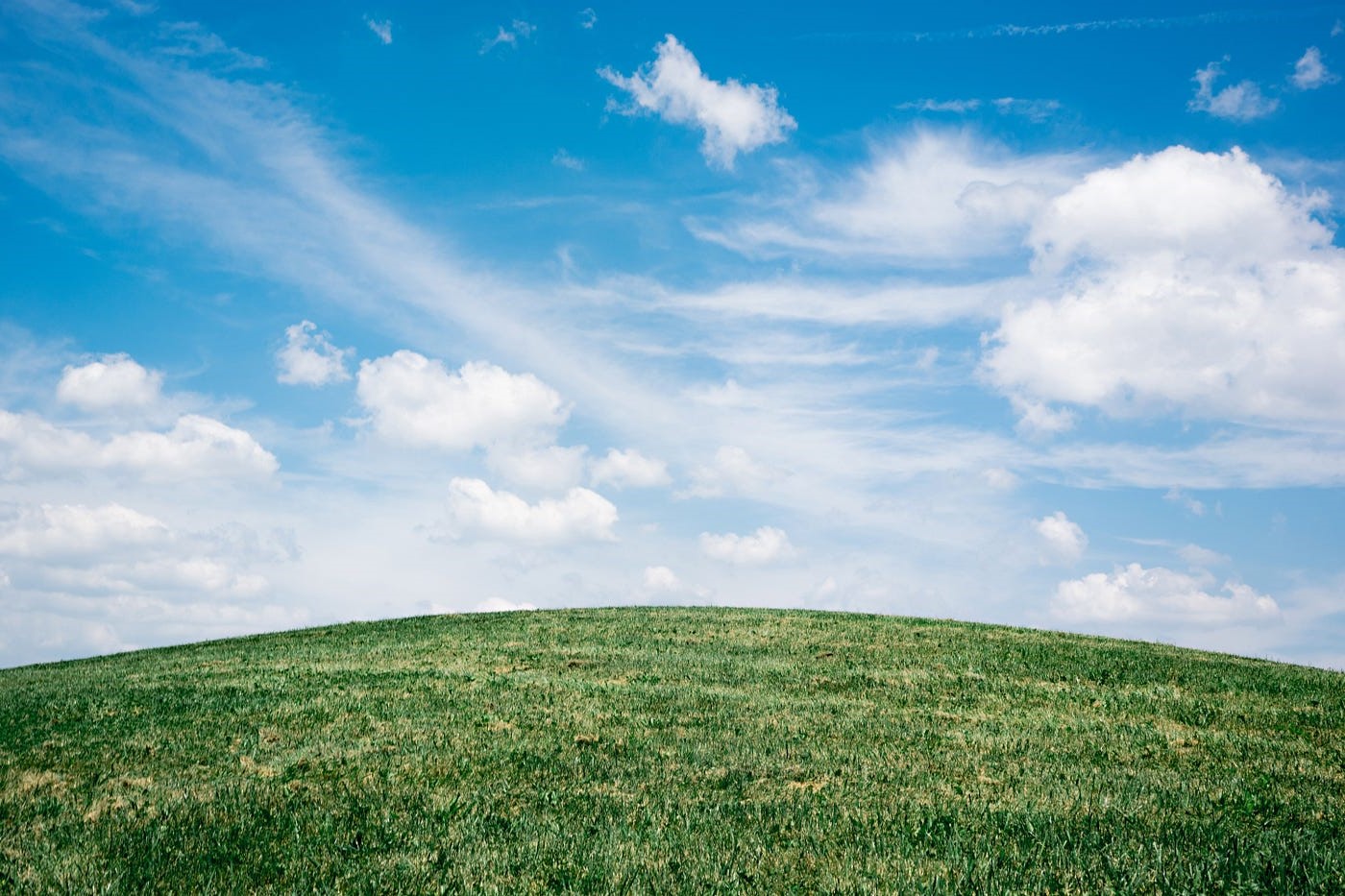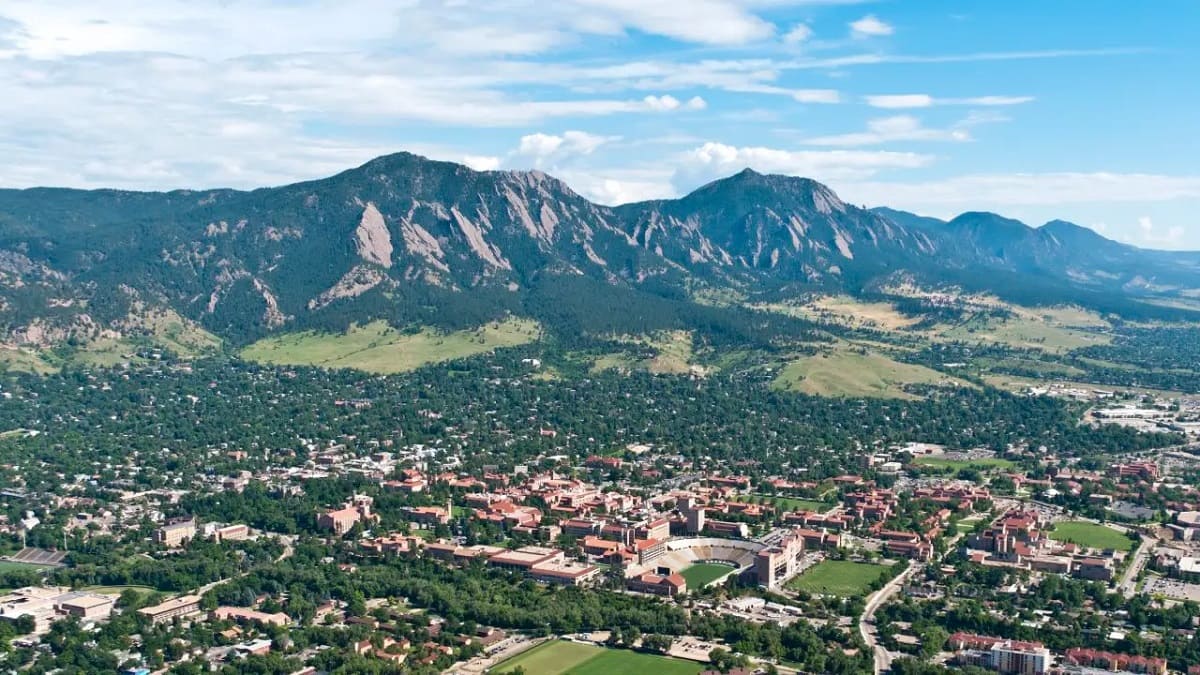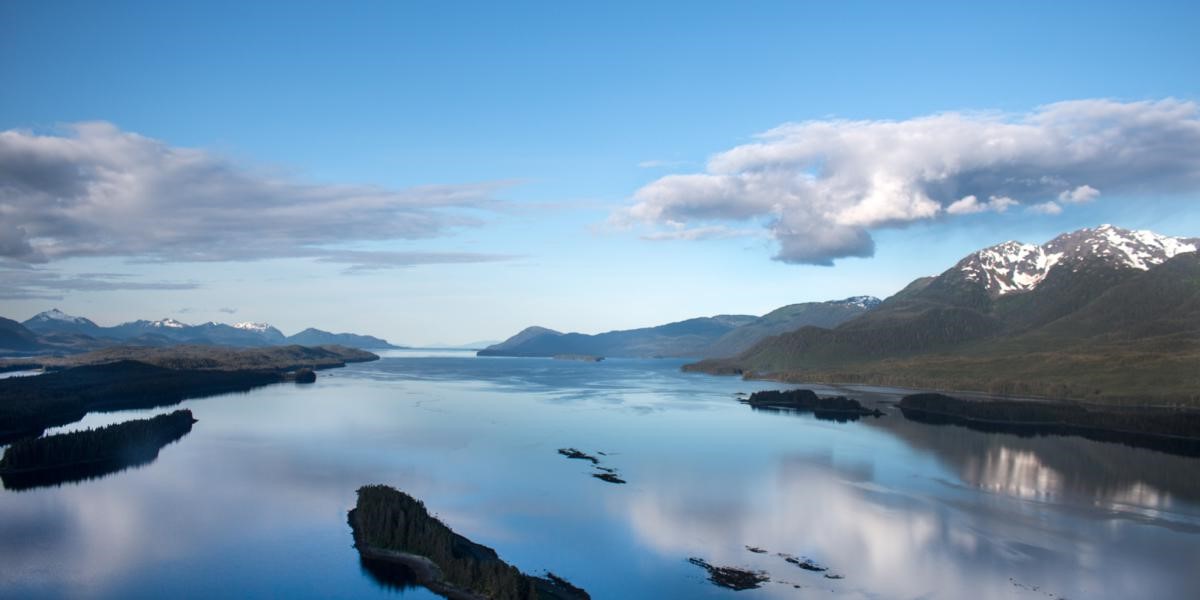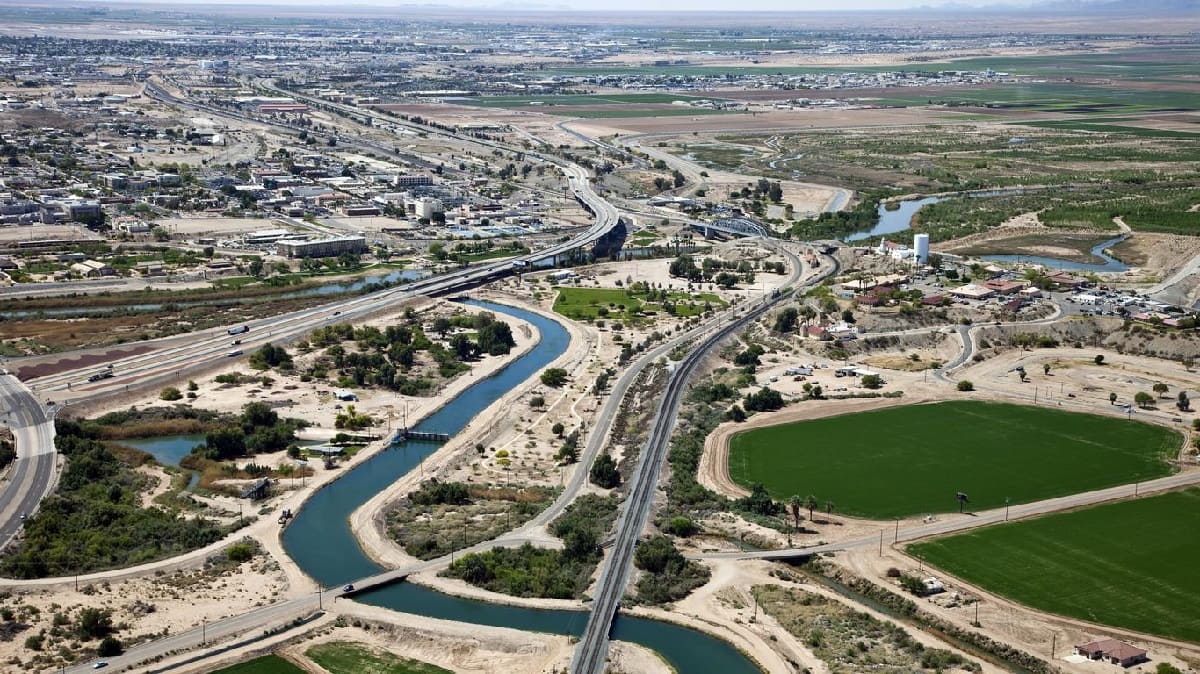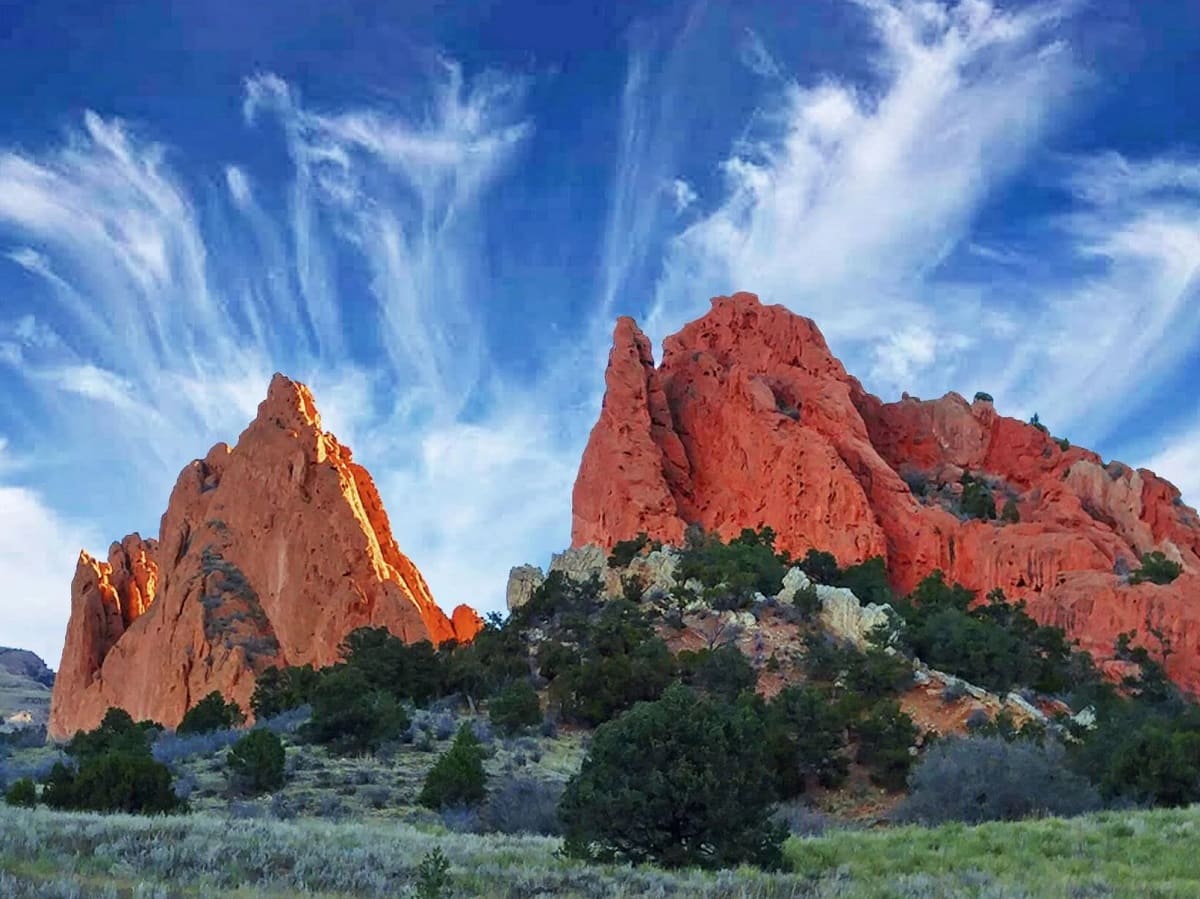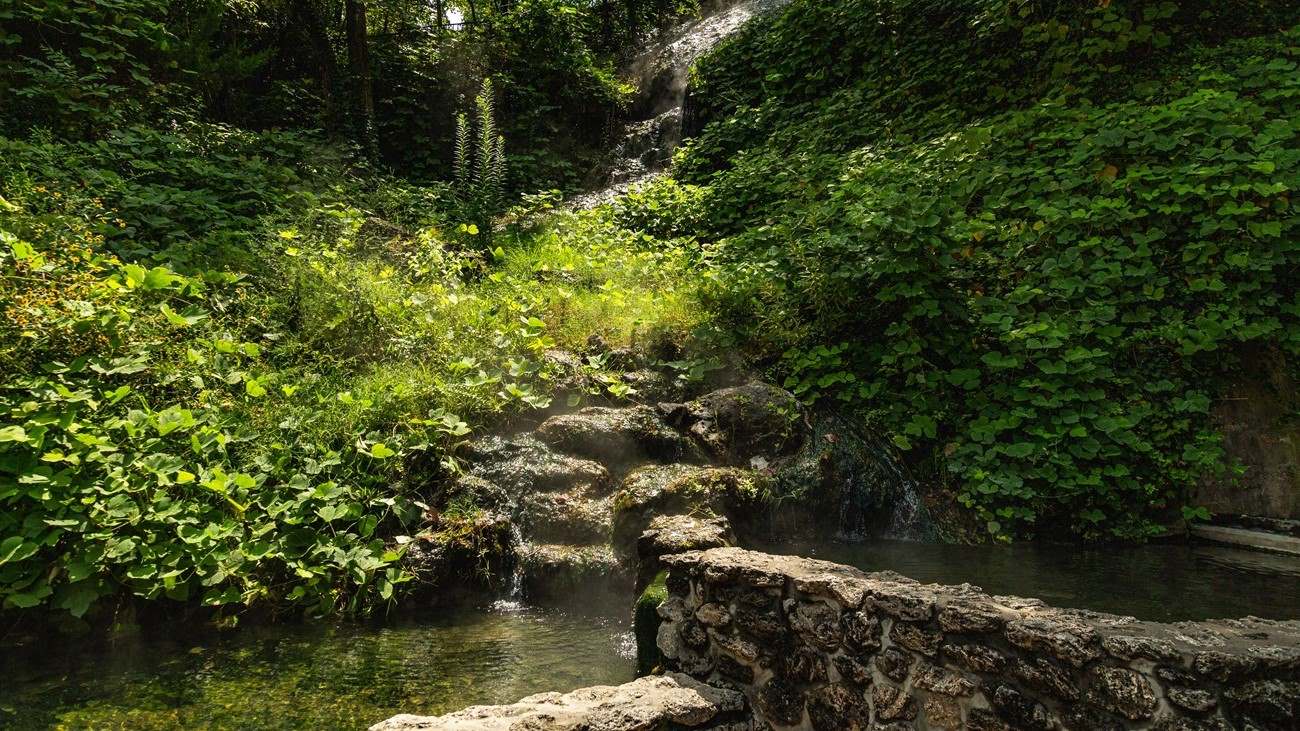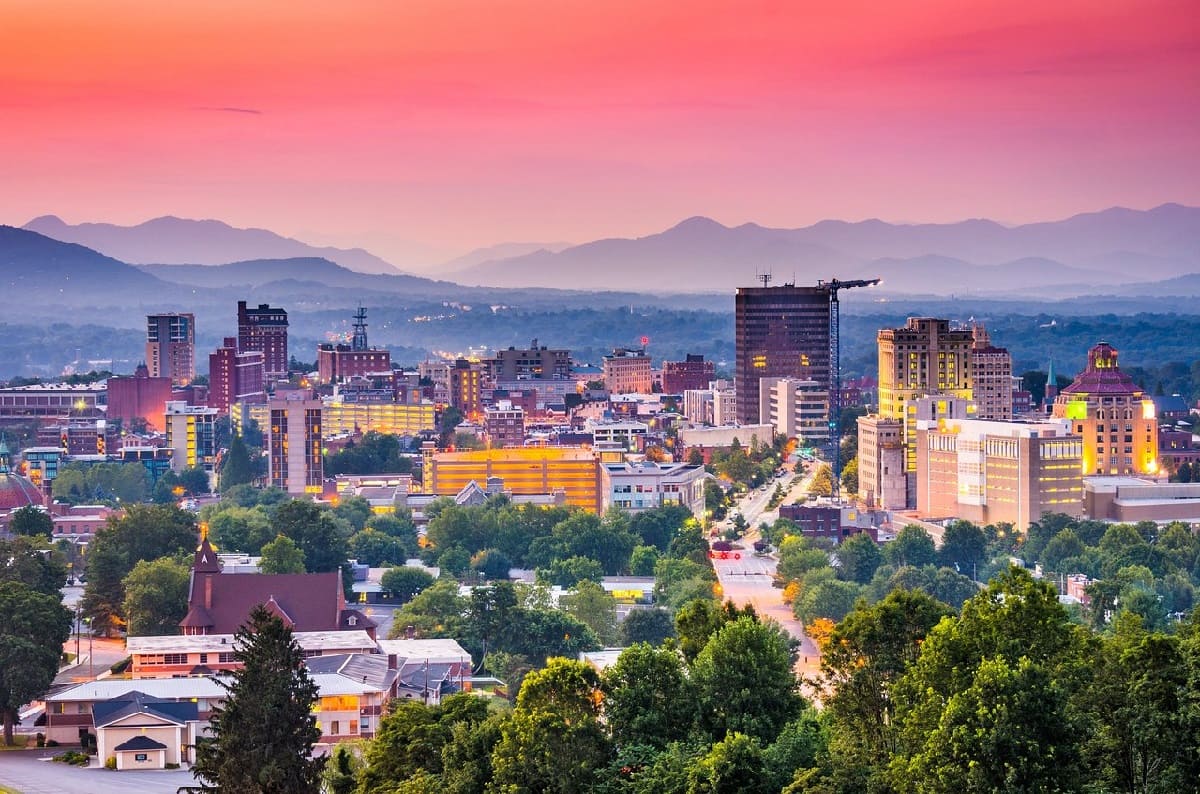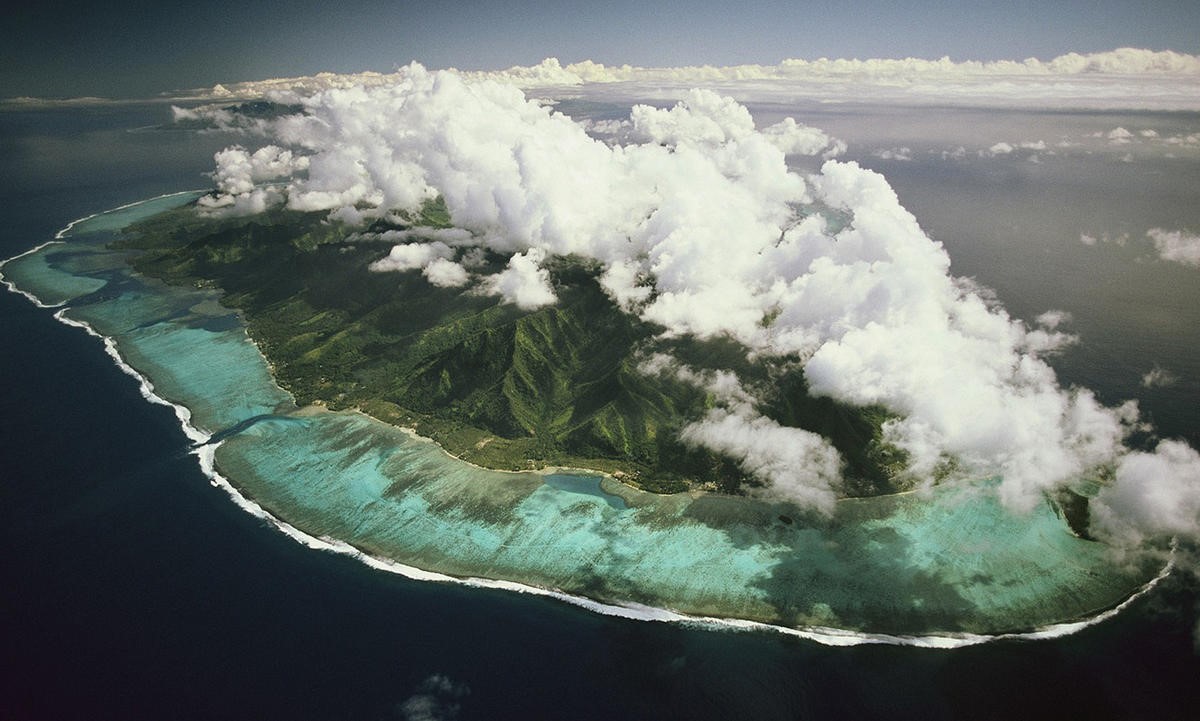Home>Weather and Climate>Wyoming Weather: A Comprehensive Guide To Year-Round Climate In Wyoming
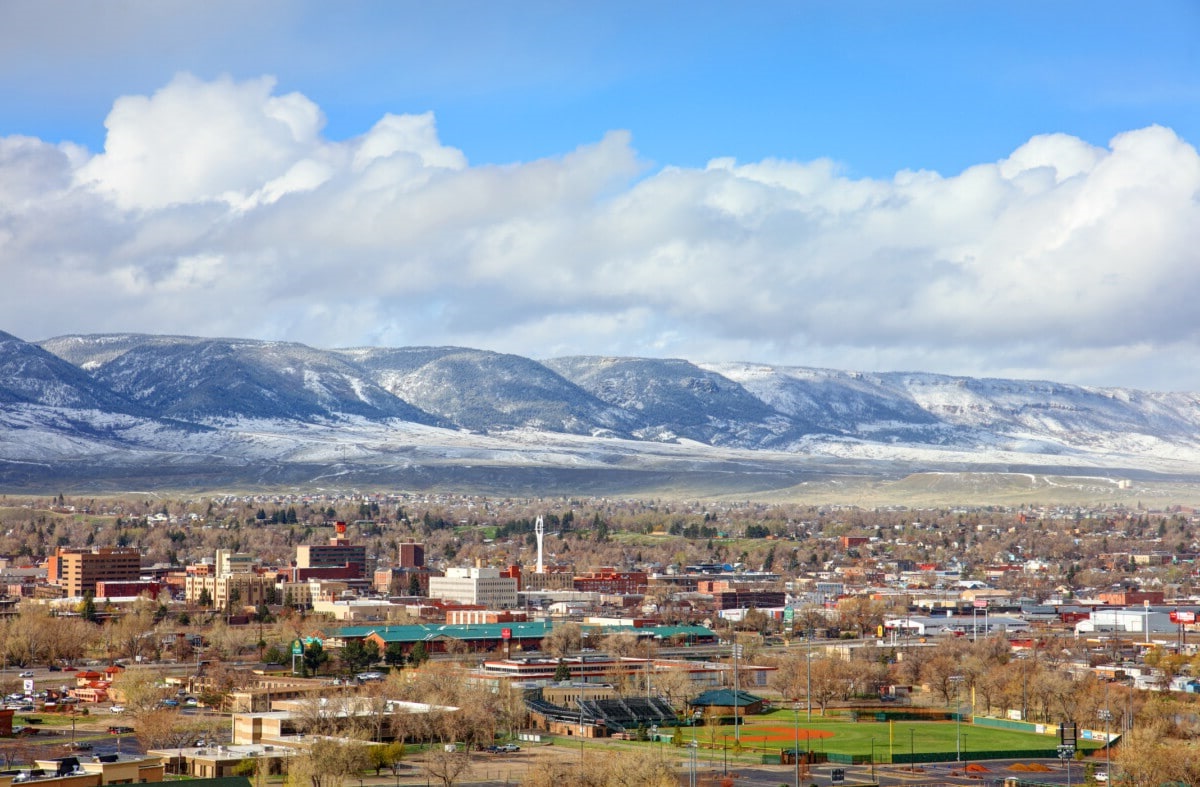

Weather and Climate
Wyoming Weather: A Comprehensive Guide To Year-Round Climate In Wyoming
Published: March 2, 2024
Discover the diverse weather and climate patterns of Wyoming with our comprehensive guide. Learn about the year-round conditions and plan your visit accordingly.
(Many of the links in this article redirect to a specific reviewed product. Your purchase of these products through affiliate links helps to generate commission for Temperatures.com, at no extra cost. Learn more)
Table of Contents
Introduction
Wyoming, known for its stunning natural landscapes and wide-open spaces, boasts a diverse and dynamic climate that varies significantly across its regions. From the majestic peaks of the Rocky Mountains to the vast plains of the High Plains, Wyoming's weather patterns are as varied as its topography. Understanding the nuances of Wyoming's climate is essential for residents, visitors, and outdoor enthusiasts alike.
In this comprehensive guide, we will delve into the year-round weather patterns of Wyoming, exploring the distinct characteristics of each season and shedding light on the extreme weather events that can impact the state. Whether you're planning a winter ski trip, a summer hiking adventure, or simply want to gain a deeper appreciation for the natural forces at play in the Cowboy State, this guide will equip you with the knowledge needed to navigate Wyoming's ever-changing weather conditions.
Throughout this exploration, we will uncover the unique features of Wyoming's climate, from the bone-chilling cold of its winters to the vibrant bloom of its springs, the sun-drenched days of summer, and the golden hues of its autumns. Additionally, we will discuss the preparations and precautions necessary to stay safe and comfortable in the face of Wyoming's diverse weather phenomena.
So, join us as we embark on a journey through the atmospheric tapestry of Wyoming, unraveling the mysteries of its weather and gaining a deeper understanding of the forces that shape this remarkable state. Whether you're a weather enthusiast, a nature lover, or a curious traveler, this guide will provide valuable insights into the captivating and ever-changing weather of Wyoming.
Understanding Wyoming's Unique Climate
Wyoming's climate is as diverse as its landscapes, characterized by a blend of continental and semi-arid influences. The state's topography plays a pivotal role in shaping its weather patterns, with the Rocky Mountains dominating the western region and the High Plains stretching across the eastern expanse. This geographical diversity gives rise to a wide spectrum of climates, from alpine conditions in the mountains to arid environments in the basins and plains.
The Rocky Mountains significantly impact Wyoming's climate, serving as a barrier to prevailing westerly winds and influencing precipitation patterns. As air masses encounter these formidable peaks, they are forced to rise, leading to orographic precipitation on the western slopes and creating a rain shadow effect on the eastern side. This stark contrast in precipitation levels contributes to the distinct climate dichotomy between the state's western and eastern regions.
In the western mountains, including the iconic Teton Range and Wind River Range, the climate is characterized by cooler temperatures and higher precipitation, fostering the development of alpine ecosystems and supporting winter sports activities. Conversely, the eastern plains experience drier conditions, with lower average precipitation and a greater temperature range between day and night.
Wyoming's semi-arid climate is also influenced by its high elevation, with the majority of the state situated above 4,000 feet. This elevation amplifies the intensity of solar radiation, leading to rapid temperature fluctuations and contributing to the state's renowned bluebird skies. However, it also results in cold winters and relatively mild summers, creating a climate that is both challenging and captivating.
The state's unique climate is further shaped by its proximity to the Continental Divide, which serves as a hydrological divide, determining whether water flows to the Atlantic or Pacific Ocean. This geographical feature influences precipitation patterns and contributes to the formation of Wyoming's numerous rivers and watersheds.
Overall, Wyoming's climate is a product of its diverse topography, high elevation, and proximity to geographical features such as the Rocky Mountains and the Continental Divide. This intricate interplay of natural elements gives rise to a climate that is as varied and captivating as the landscapes it encompasses, making Wyoming a compelling destination for weather enthusiasts and nature lovers alike.
Winter Weather in Wyoming
Winter in Wyoming casts a spellbinding transformation across the state, enveloping its rugged terrain in a blanket of snow and ice. From the towering peaks of the Rocky Mountains to the expansive plains, the arrival of winter heralds a season of both beauty and challenges.
The western mountain ranges, including the Teton and Wind River ranges, experience substantial snowfall during winter, creating a winter wonderland that beckons skiers, snowboarders, and outdoor enthusiasts. The renowned ski resorts of Jackson Hole and Grand Targhee receive abundant snow, offering pristine powder and exhilarating slopes for winter sports aficionados. The crisp mountain air, adorned with the scent of pine, carries an invigorating chill that adds to the allure of the winter landscape.
In contrast, the eastern plains of Wyoming endure harsher winter conditions, characterized by biting winds and frigid temperatures. The vast expanses of the High Plains are often subject to blustery snowstorms and sub-zero temperatures, creating a stark and unforgiving winter environment. The combination of sparse vegetation and open terrain allows the wind to sweep across the plains with unrelenting force, shaping the iconic snowdrifts and sculpting the land with its wintry touch.
Throughout the state, winter brings a sense of tranquility as nature slows its pace, and the world is cloaked in a serene stillness. The crystalline snow blankets the landscape, transforming it into a pristine tableau of white, while icicles glisten in the sunlight, casting a mesmerizing spectacle across the land.
However, the enchanting beauty of winter in Wyoming is accompanied by the need for vigilance and preparedness. The state's winter weather can pose significant challenges, including hazardous driving conditions, potential avalanches in mountainous areas, and the risk of frostbite and hypothermia in extreme cold. It is essential for residents and visitors to stay informed about weather forecasts, road conditions, and winter storm warnings, and to equip themselves with appropriate winter attire and emergency supplies.
As winter weaves its icy tapestry across Wyoming, it invites us to embrace the season's unique allure while respecting its formidable nature. Whether reveling in the exhilaration of winter sports in the mountains or finding solace in the tranquil beauty of the snow-covered plains, Wyoming's winter weather offers a captivating blend of adventure and serenity, making it a season to be both cherished and approached with caution.
Spring Weather in Wyoming
Spring breathes new life into Wyoming, heralding the awakening of the natural world after the hushed stillness of winter. As the snow begins to melt and the days grow longer, the landscape undergoes a remarkable transformation, bursting forth with vibrant colors and rejuvenated vitality.
In the western mountains, spring brings a gradual thaw, coaxing the snow-laden slopes to reveal the lush alpine meadows beneath. The iconic wildflowers of Wyoming, including lupine, Indian paintbrush, and alpine forget-me-nots, emerge in a breathtaking display of hues, painting the mountainsides with a kaleidoscope of colors. The rivers and streams, swollen with the melting snow, flow with renewed vigor, offering a picturesque backdrop for outdoor activities such as fly fishing and whitewater rafting.
On the eastern plains, the arrival of spring marks the onset of a dramatic transition. The dormant grasslands awaken, cloaking the prairies in a verdant tapestry that stretches as far as the eye can see. The gentle warmth of the sun coaxes the landscape to life, and migratory birds return to the region, filling the air with their melodic songs. The rejuvenated plains become a haven for wildlife, with pronghorn antelope, mule deer, and bison grazing amidst the burgeoning vegetation.
However, spring in Wyoming is not without its tempestuous side. The transition from winter to spring can bring rapid and unpredictable weather changes, including snowstorms, thunderstorms, and fluctuating temperatures. This dynamic weather can create challenging conditions for outdoor enthusiasts and agricultural activities, necessitating a keen awareness of weather forecasts and preparedness for sudden shifts in weather patterns.
As the state awakens from its wintry slumber, spring in Wyoming offers a captivating blend of natural beauty and seasonal transitions. It is a time of renewal and transformation, where the landscape undergoes a remarkable metamorphosis, and the promise of warmer days beckons both residents and visitors to embrace the splendor of Wyoming's spring weather.
Summer Weather in Wyoming
Summer in Wyoming unfolds as a season of boundless exploration and natural splendor, as the state's diverse landscapes bask in the warmth of the sun. From the rugged peaks of the Rocky Mountains to the expansive plains, Wyoming's summer weather offers a tapestry of experiences that beckon outdoor enthusiasts, nature lovers, and adventure seekers.
In the western mountains, summer brings a resplendent transformation as the snow retreats, revealing alpine meadows adorned with a profusion of wildflowers. The vibrant hues of lupine, Indian paintbrush, and columbine carpet the slopes, creating a breathtaking mosaic of colors that captivates the senses. The crystalline lakes and rushing streams offer a refreshing respite, inviting hikers, anglers, and nature enthusiasts to immerse themselves in the pristine alpine environment.
On the eastern plains, summer casts a golden glow across the expansive grasslands, where the undulating prairies stretch to the horizon. The warm embrace of the sun fosters the growth of native grasses and wildflowers, painting the plains with a verdant palette that teems with life. The iconic wildlife of Wyoming, including bison, pronghorn antelope, and birds of prey, thrive amidst the flourishing landscape, offering captivating opportunities for wildlife observation and photography.
Summer in Wyoming is characterized by long, sun-drenched days and clear, cerulean skies that stretch endlessly overhead. The high elevation of the state ensures that the summer air remains crisp and invigorating, providing a welcome escape from the sweltering heat experienced in lower elevations. This temperate climate creates ideal conditions for a myriad of outdoor activities, including hiking, camping, mountain biking, and wildlife viewing, making Wyoming a haven for those seeking to immerse themselves in the natural world.
However, Wyoming's summer weather can also bring sudden and dramatic changes, including afternoon thunderstorms and rapid temperature fluctuations. These dynamic weather patterns underscore the need for preparedness and vigilance, particularly for outdoor enthusiasts venturing into the backcountry. Staying informed about weather forecasts and heeding any advisories is essential for ensuring a safe and enjoyable summer experience in Wyoming.
As the landscape awakens to the vibrant energy of summer, Wyoming invites visitors to embrace the season's abundance and revel in the untamed beauty of its natural wonders. Whether exploring the alpine realms of the mountains or traversing the endless prairies, the summer weather in Wyoming offers a captivating invitation to connect with the untamed spirit of the West.
Fall Weather in Wyoming
Fall descends upon Wyoming with a breathtaking transformation, as the landscape undergoes a remarkable metamorphosis, cloaking the state in a tapestry of rich and vibrant hues. As the summer sun gradually yields to the crisp embrace of autumn, Wyoming's diverse ecosystems come alive with the resplendent colors of fall foliage, creating a captivating spectacle that captivates the senses and beckons outdoor enthusiasts and nature lovers alike.
In the western mountains, the arrival of fall heralds a striking transformation as the alpine landscapes are adorned with a palette of gold, crimson, and amber. The quaking aspen, cottonwood, and tamarack trees ignite the mountainsides with their fiery foliage, casting a mesmerizing glow across the rugged terrain. The crisp mountain air carries the earthy scent of fallen leaves, and the tranquil lakes reflect the kaleidoscope of colors, creating a scene of unparalleled beauty that invites hikers, photographers, and leaf-peepers to immerse themselves in the autumnal splendor.
On the eastern plains, the grasslands and prairies undergo a subtle yet enchanting change, as the native grasses and shrubs transition to shades of russet and ochre. The vast expanse of the plains is transformed into a patchwork of warm, earthy tones, offering a serene and picturesque backdrop for wildlife observation and outdoor exploration. Migratory birds, including sandhill cranes and waterfowl, traverse the expansive skies, adding a touch of grace and vitality to the autumn landscape.
The fall weather in Wyoming is characterized by crisp, clear days and cool, refreshing nights, creating an ideal environment for outdoor activities such as hiking, camping, and wildlife viewing. The moderate temperatures and diminished crowds make fall an opportune time to explore the state's natural wonders, from the iconic national parks to the hidden gems nestled within the mountains and plains.
However, Wyoming's fall weather can also bring rapid weather changes, including early snowstorms in the mountains and fluctuating temperatures across the state. It is essential for outdoor enthusiasts and travelers to stay informed about weather forecasts and to be prepared for the potential onset of winter conditions, particularly at higher elevations.
As fall weaves its enchanting spell across Wyoming, it invites residents and visitors to embrace the season's abundance and immerse themselves in the captivating beauty of the state's natural landscapes. Whether traversing the alpine trails ablaze with autumn colors or savoring the tranquility of the prairies, the fall weather in Wyoming offers a captivating invitation to witness the timeless spectacle of nature's grand transition.
Extreme Weather Events in Wyoming
Wyoming is no stranger to extreme weather events, with its diverse climate giving rise to a wide array of meteorological phenomena that can pose significant challenges to residents and visitors alike. From blizzards and thunderstorms to wildfires and tornadoes, the state experiences a range of weather extremes that demand vigilance, preparedness, and a deep respect for the forces of nature.
During the winter months, Wyoming is susceptible to powerful blizzards that unleash fierce winds and heavy snowfall, leading to whiteout conditions and treacherous travel. These blizzards can result in road closures, stranded motorists, and disrupted supply chains, highlighting the need for proactive measures to ensure the safety and well-being of individuals across the state. Additionally, the mountainous regions are prone to avalanches, especially following periods of heavy snow accumulation, necessitating careful monitoring and risk assessment for backcountry enthusiasts and ski resort operators.
In the realm of summer weather, Wyoming faces the threat of severe thunderstorms that can unleash torrential rainfall, hail, and intense lightning. These storms have the potential to trigger flash floods, posing risks to low-lying areas and waterways. Furthermore, the combination of dry conditions and lightning strikes can contribute to the ignition and rapid spread of wildfires, particularly in the grasslands and forested areas of the state. The impact of these wildfires extends beyond immediate safety concerns, encompassing ecological damage and air quality issues that affect both human health and the environment.
Tornadoes, though less frequent in Wyoming compared to other regions of the United States, remain a notable weather hazard, particularly during the spring and summer months. These powerful vortexes of wind can cause widespread destruction, prompting the need for robust emergency preparedness and public awareness initiatives to mitigate the potential impact on communities.
In light of these diverse and impactful weather events, it is essential for individuals and authorities in Wyoming to prioritize proactive measures, including emergency planning, public education, and infrastructure resilience, to safeguard against the effects of extreme weather. By fostering a culture of preparedness and resilience, Wyoming can navigate the challenges posed by its dynamic climate and ensure the safety and well-being of its residents in the face of nature's formidable forces.
How to Prepare for Wyoming Weather
Preparing for Wyoming's diverse and dynamic weather is essential for residents, visitors, and outdoor enthusiasts. The state's varied climate, characterized by extreme temperatures, rapid weather changes, and the potential for severe weather events, necessitates proactive measures to ensure safety and comfort in the face of nature's unpredictability.
-
Stay Informed: Keeping abreast of weather forecasts and advisories is crucial for understanding and anticipating Wyoming's weather patterns. Utilize reliable sources of information, such as the National Weather Service, to stay updated on current conditions, potential hazards, and impending weather systems.
-
Dress Appropriately: Wyoming's fluctuating temperatures and exposure to elements require suitable attire. Layering clothing is key to adapting to temperature variations, especially in mountainous areas. Additionally, sturdy footwear and protective gear are essential for outdoor activities, ensuring comfort and safety in diverse weather conditions.
-
Emergency Supplies: As part of preparedness, it is advisable to keep emergency supplies readily available, including a well-stocked first aid kit, non-perishable food, water, blankets, and essential medications. These provisions are vital in the event of unexpected weather-related disruptions or emergencies.
-
Vehicle Preparedness: For residents and travelers navigating Wyoming's vast expanses, ensuring vehicle readiness is paramount. This includes maintaining a full tank of gas, carrying emergency supplies in the vehicle, and equipping it with appropriate tires and safety equipment to navigate challenging road conditions, particularly during winter.
-
Outdoor Safety: Engaging in outdoor activities, such as hiking, camping, or skiing, requires careful planning and adherence to safety guidelines. Researching trail conditions, avalanche risks, and wildlife encounters, as well as informing others of your itinerary, are essential precautions for outdoor excursions.
-
Home Readiness: Securing homes against extreme weather events, such as winter storms and high winds, is crucial. This involves fortifying structures, clearing gutters, and ensuring adequate heating and insulation to withstand cold temperatures.
-
Community Awareness: Engaging with local community resources, such as emergency management agencies and neighborhood watch groups, fosters a collective approach to weather preparedness. Participating in community drills and awareness programs enhances readiness and resilience at the local level.
By embracing these proactive measures and cultivating a mindset of preparedness, individuals and communities can navigate Wyoming's diverse weather with confidence and resilience, ensuring safety and well-being in the face of the state's captivating yet unpredictable climate.
Conclusion
In conclusion, Wyoming's weather is a captivating tapestry of natural phenomena, shaped by its diverse topography and continental climate. From the majestic peaks of the Rocky Mountains to the expansive plains of the High Plains, the state's weather patterns offer a rich array of experiences and challenges throughout the year.
Understanding Wyoming's unique climate is essential for residents, visitors, and outdoor enthusiasts. The distinct characteristics of each season, from the bone-chilling cold of winter to the vibrant bloom of spring, the sun-drenched days of summer, and the golden hues of autumn, provide a profound appreciation for the state's ever-changing weather conditions.
The extreme weather events that can impact Wyoming, including blizzards, thunderstorms, wildfires, and tornadoes, underscore the need for vigilance, preparedness, and a deep respect for the forces of nature. By prioritizing proactive measures, emergency planning, and public education, Wyoming can navigate the challenges posed by its dynamic climate and ensure the safety and well-being of its residents in the face of nature's formidable forces.
As residents and visitors prepare for Wyoming's diverse and dynamic weather, staying informed, dressing appropriately, maintaining emergency supplies, ensuring vehicle readiness, adhering to outdoor safety guidelines, securing homes, and engaging with local community resources are essential steps to navigate the state's captivating yet unpredictable climate with confidence and resilience.
Ultimately, Wyoming's weather offers a captivating invitation to witness the timeless spectacle of nature's grand transitions. Whether reveling in the exhilaration of winter sports, embracing the splendor of spring blooms, immersing in the untamed beauty of summer, or savoring the tranquility of autumn, the state's weather provides a rich tapestry of experiences that beckon individuals to connect with the untamed spirit of the West.
